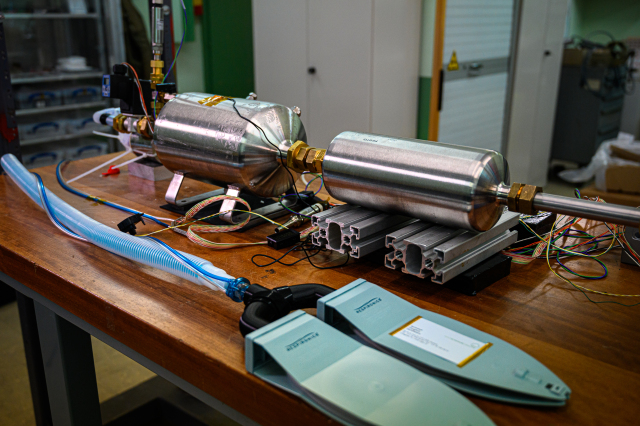As the coronavirus pandemic rages on, shortages of protective medical equipment and life-saving devices such as ventilators are causing significant stress to the global response to the virus. Now, scientists that under normal circumstances spend their days probing the nature of reality are working to fill the gaps.
CERN, the European research organization that operates the Large Hadron Collider, kicked off an initiative called CERN Against Covid-19 in March, which mobilizes the organization’s facilities and the expertise of its thousands of affiliated researchers to fight the coronavirus pandemic. This includes manufacturing and distributing protective equipment such as face shields and sanitizer, and ventilator designs. CERN community members can propose a new undertaking by filling out a form.
Videos by VICE
One ventilator design in particular comes from particle physicists working on the Large Hadron Collider beauty experiment, or LHCb, which searches for new physics by studying the differences between matter and antimatter.
It’s called the High Energy physics community Ventilator, or HEV. It’s a “stripped-down” design aimed at affordability, ease of sourcing parts, and rapid deployment. The researchers note in a preprint that the proposed design, which still needs to be tested by medical experts, isn’t meant to replace hospital ventilators but could be used on people with mild symptoms or who are recovering from an infection of Covid-19.
According to an article in the CERN Courier, the physicists realized that their expertise in precisely controlling gas pressure was well-suited to making ventilators. They also followed the UK government’s guidelines for ventilator design. Still, they were physicists, not medical doctors. So, they called in backup.
“Here we have benefited enormously from the experience and knowledge of CERN’s HSE [occupational health & safety and environmental protection] group for medical advice, conformity with applicable legislation and health-and-safety requirements, and the working relationship with local hospitals,” HEV collaborator and CERN scientist Paula Collins told the Courier. “The team is also greatly supported from other CERN departments, in particular for electronic design and the selection of the best components for gas manipulation.”

During lockdown, the team was also assisted by experienced anesthesiologists and respiratory experts from across Europe via online chat.
Incredibly, the HEV isn’t the only ventilator design to come out of the particle physics community. There is also the Mechanical Ventilator Milano, which comes out of the Global Argon Dark Matter Project, and Project Open Air, which is based out of Portugal’s Laboratory of Instrumentation and Experimental Particle Physics. According to CERN, common to all these designs is they will be made available under the CERN Open Hardware License, so they can be implemented anywhere and adapted to local needs.
Particle physicists making medical devices seems counterintuitive, but really, who better understands our current reality than the people who probe its dark edges?




